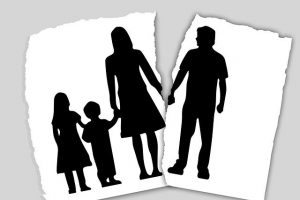
As the United States becomes more accepting of interracial unions, multiracial individuals are a rapidly growing segment of our population. Social scientists frequently tout the rising number of interracial unions as a sign that racial/ethnic distinctions are diminishing. An implicit assumption behind such a view is that interracial couples live happily ever after.
The reality, however, is much more complicated. Although attitudes toward interracial unions have become much more favorable over time, some interracial couples continue to report ostracism from friends and families. Family opposition may increase when interracial couples transition into more serious relationships. For example, transitions into marriage and/or childbearing often intensify opposition because they portend more permanent unions and changes to the racial/ethnic composition of the family line.
Such stigma may decrease the stability of interracial unions and increase the family instability experienced by multiracial children. For example, barriers to intermarriage may partially explain why relative to same-race couples, higher shares of interracial couples cohabit. Cohabitations are known to break up at higher rates than marriages. Stigma and lack of family support may also have adverse effects on the relationship quality of interracial couples. Because opposition tends to be most pronounced for White-Black interracial unions, reflecting the historic legacy of anti-miscegenation, the risk of union dissolution may be particularly high for multiracial children of White-Black descent. In general, whether or not multiracial children are more likely than their peers to experience family instability is largely unknown because existing studies focus on the family experiences of single-race children.
Our research
Our study, published in the Journal of Marriage and Family, examined multiracial children’s exposure to family instability through age 12. We analyzed data from the 2006-2019 National Survey of Family Growth to investigate whether multiracial children’s experiences of family instability differ from their single-race peers, whether multiracial children’s exposure to family instability varies by their parents’ marital status at birth, and whether multiracial children of White and Black descent experience more family instability than children of White and Hispanic descent.
Findings
Our results show that how multiracial children’s risk of family instability compares with that of their single-race peers varies by their parent’s marital status at birth. Multiracial children born in cohabitations were more likely than their single-race peers to experience family instability. By contrast, the family instability experiences of multiracial children born to married parents tended to fall between those of their single-race White and single-race minority peers.
Multiracial children’s risk of union dissolution also differs according to both parents’ race and ethnicity, but how it differs continues to depend on parents’ marital status at birth. Contrary to expectations, multiracial children of White-Black descent born in marriages were less likely than those of White-Hispanic descent to experience family dissolution. This pattern likely arises because White-Black couples in intermarriages are a select group with extraordinary levels of commitment who overcame the formidable barriers to White-Black intermarriage. Differences between multiracial children born in cohabitation were minimal. The lack of a difference may reflect two opposing forces at play. Parents of White-Black children experience more stigma than parents of White-Hispanic children, increasing their risk of union dissolution. Simultaneously, the more formidable barriers to interracial marriage mean that interracial cohabitations involving White-Black cohabitations may be more “marriage-like” than White-Hispanic cohabitations, and thus more stable.
Implications
Our findings underscore the importance of recognizing the heterogeneity of the multiracial population. Their family contexts differ vastly depending on their parents’ marital status at birth and both parents’ race/ethnicity. Moreover, that higher shares of multiracial children are born to cohabitors suggests that the rise in interracial unions may not be blurring racial/ethnic distinctions. Rather, our results suggest that systemic racism and associated unfavorable attitudes towards interracial unions may be creating a disadvantaged group: multiracial children born in cohabiting unions. These children are significantly more likely than their peers to experience family instability, which is linked to poorer outcomes.
Kate H. Choi is an Associate Professor in the Department of Sociology and Acting Director of the Centre for Research on Social Inequality at Western University in London, ON. Rachel E. Goldberg is an Assistant Professor in the Department of Sociology in the University of California Irvine. Their research explores the causes and consequences of inequalities within and across families.

Comments 1
Salesh Mishra — April 20, 2021
this is actually a really good article.
interracial relationships can be much more difficult but one thing that makes him very difficult is a fact that both sides the families can have more problems.
he just don't know what you're getting into and it can be things that you're just not familiar with on your side of the family or from your cultural background.